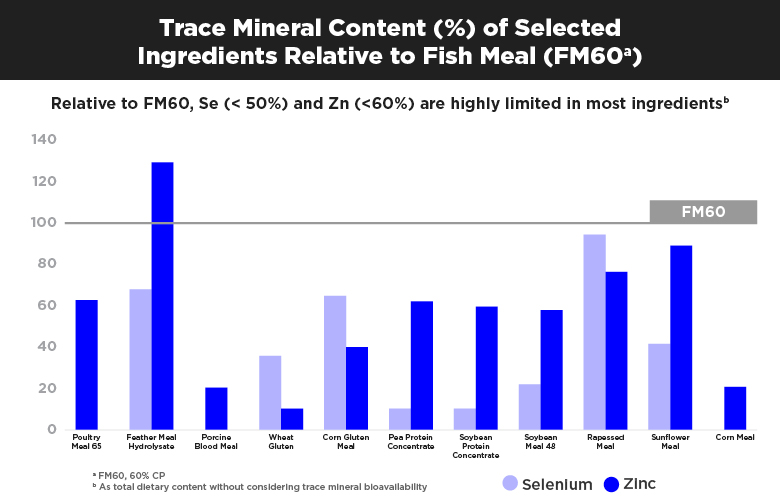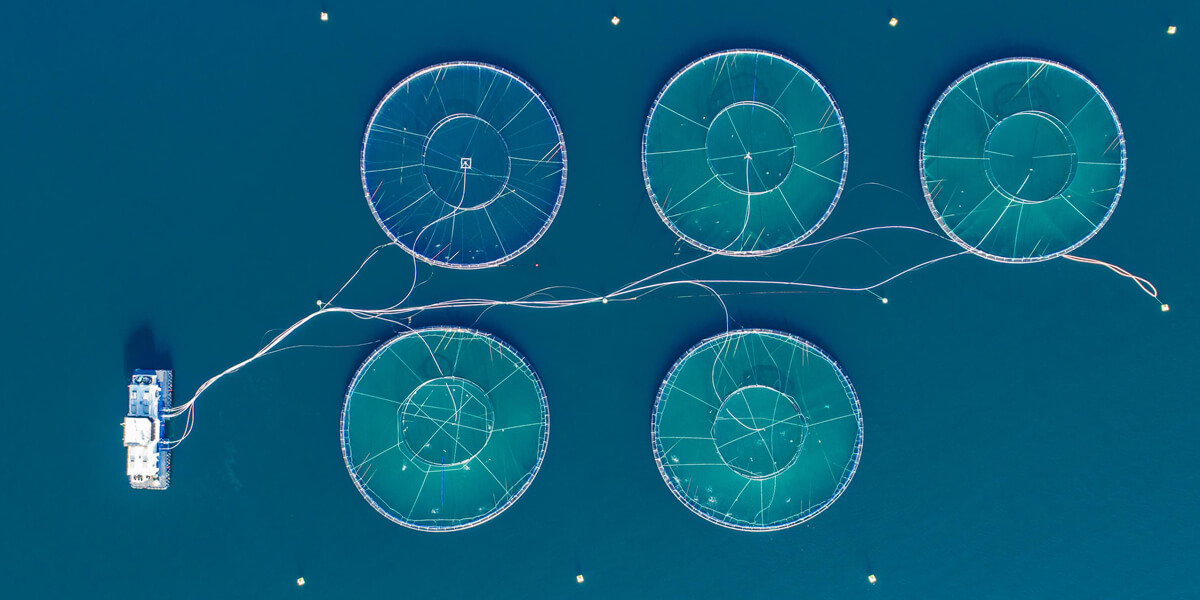For many years, fish meal and fish oil were used as the primary sources of protein and fat, respectively, in aquaculture diets. Fish meal is a rich and typically high-quality source of protein and trace minerals. Additionally, bioavailability of these nutrients in fish and shrimp is very high, meaning that for many years, and while using high levels of this ingredient in feed formulations, the aquaculture industry didn’t need to look for alternative and bioavailable sources of essential nutrients such as trace minerals.
As aquaculture production increased through the 1990s and the early 2000s, however, producers were faced with reducing fish meal in feed formulations and forced to find alternative sources of protein like soybean meal.
While these changes helped meet cost and sustainable aquaculture requirements, it left fish and shrimp producers looking for ways to help their fish and shrimp meet their nutritional requirements and maintain high growth and production rates.
In this article, I explain the reasons for reducing the amount of fish meal in aquaculture production and how you can help fulfill aquaculture nutrition requirements with performance trace mineral supplements.
The Desire for More Sustainable Aquaculture Production Drives Changes in Fish Nutrition
Two main reasons led the aquaculture industry to look for alternative sources of protein for their animals: Availability/price and consumer demand for sustainably produced aquaculture.
The Availability and Price of Fish Meal and Other Marine Ingredients
Most fish meal and fish oil ingredients come from countries like Peru and are affected by climate phenomena like El Niño. El Niño impacts ocean temperatures and currents which, in turn, impacts the migration of wild fish in the southern hemisphere. When oceans become warmer, fish migrate to cooler waters and currents, reducing the total catch for fish meal ingredients, resulting in lower availability and higher prices.
An Increased Consumer Demand for Sustainable Aquaculture Practices
As consumption of fish and shrimp continued to increase, consumers started to look into the sustainability of the farmed fish and shrimp they were purchasing. To many consumers, it didn’t make sense to grow fish by feeding them with other fish and, therefore, over-exploiting the ocean. Consumers started to call for environmentally friendly and sustainable aquaculture.
Consumers, retailers and even countries importing seafood are looking for aquaculture producers with eco-certifications to prove that they are producing sustainable aquaculture. Reducing the amount of fish meal in the diets of farmed aquatic species is one way to achieve one of these certifications.
Impact of Alternative Protein Sources on Aquaculture Nutrition
So, the aquaculture industry began looking for alternative protein sources, and today one of the most commonly used protein sources in aquafeed formulations is soybean meal. It is cheaper than fish meal, the availability is good and there are less seasonal constraints that affect its availability.
However, replacing fish meal with plant protein sources such as soybean meal limits the amount and availability of essential nutrients like amino acids and trace minerals like zinc and selenium, among others, in the feed. As with other plant protein sources, soybean meal contains anti-nutritional factors, one of which is phytic acid. Phytic acid binds to trace minerals and makes them less available to fish and shrimp, which causes two main problems:
- Trace mineral requirements of fish and shrimp are not being met, resulting in lower growth, poor health condition and production.
- The resulting excretion of unabsorbed trace minerals has a negative impact on the environment.
The following chart illustrates the varying concentration of trace minerals in common fish feed ingredients.

How Advanced Trace Mineral Supplements Aid the Sustainable Aquaculture Movement
With the use of fish meal being reduced, it’s important to adjust the level as well as the source of trace minerals as a part of your aquaculture nutrition program. Furthermore, due to regulations on trace mineral supplementation and total dietary levels the aquaculture industry must look for alternative trace mineral sources that meet both the animal, environment and the regulation needs.
For example, the European Union has set a limit of 180 mg of zinc per kg of complete feed for salmonids and 150 mg/kg of complete feed for other fish. According to the European Food Safety Authority, the new proposed limits that went into effect in 2016 could reduce the amount of zinc in manure released in the environment by about 20% and ensures consumer safety, animal health and welfare and will not affect animal productivity.
This means aquafeed producers need to look for ways to be more efficient with their supplementation of trace minerals.
Zinpro Performance Minerals® are two to three times more bioavailable than inorganic sources of trace minerals, meaning you can get better production and meet their trace mineral requirements with less supplementation.
Visit us online to learn why trace minerals are important for aquaculture. To learn more about supplementing your aquaculture nutrition program with performance trace minerals, contact a Zinpro representative today.

